| Massage and the Original Swedish Movements | ||
HABITUAL CONSTIPATION
Massage and movements are now freely used for constipation. The treatment must always be local in the beginning, and afterward constitutional.
- 1. Local massage (ten to twenty minutes).
- 2. St. bending of knees (hands on hips).
- 3. L. raising body.
- 4. S. turning of body.
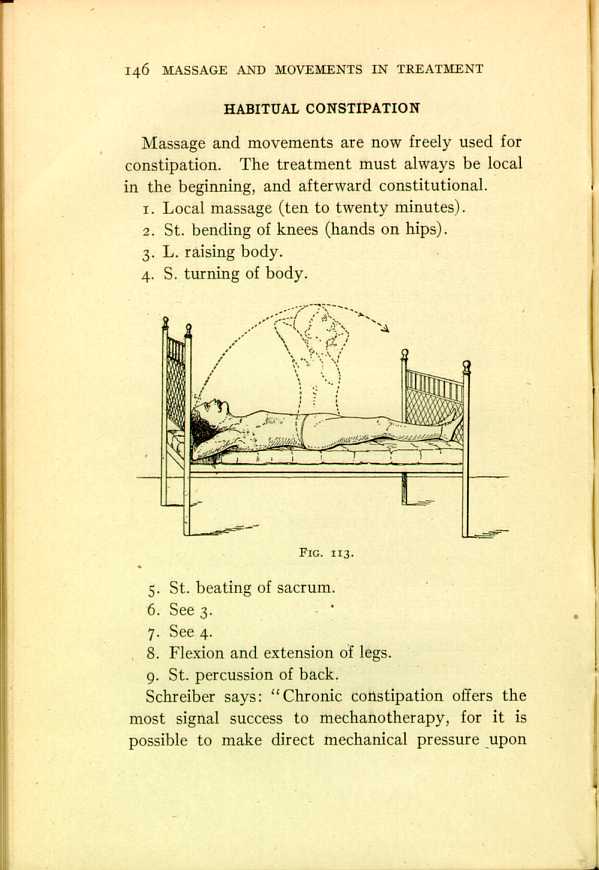
FIG. 113.
[Description: Drawing of a man lying on a bed. Dotted lines indicate movement to a sitting position. ] - 5. St. beating of sacrum.
- 6. See 3.
- 7. See 4,
- 8. Flexion and extension of legs.
- 9. St. percussion of back.
Schreiber says: "Chronic constipation offers the most signal success to mechanotherapy, for it is possible to make direct mechanical pressure upon
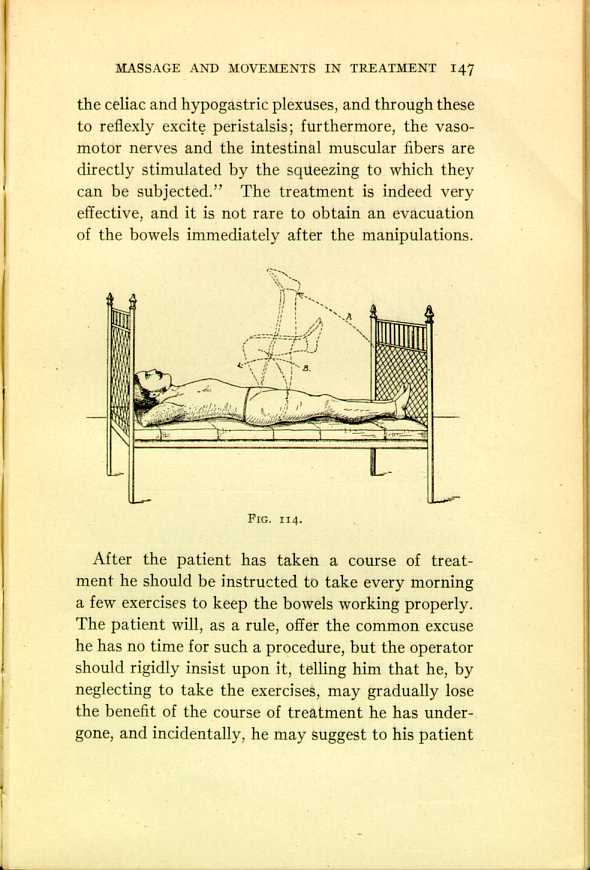
FIG. 114.
[Description: Drawing of a man lying on a bed. Dotted lines indicate movement of the legs. ]After the patient has taken a course of treatment he should be instructed to take every morning a few exercises to keep the bowels working properly. The patient will, as a rule, offer the common excuse he has no time for such a procedure, but the operator should rigidly insist upon it, telling him that he, by neglecting to take the exercises, may gradually lose the benefit of the course of treatment he has undergone, and incidentally, he may suggest to his patient
As in Fig. 113, the patient should lie flat on his back, without
head-rest, with hands clasped back of the head; he should slowly rise to
a sitting position,
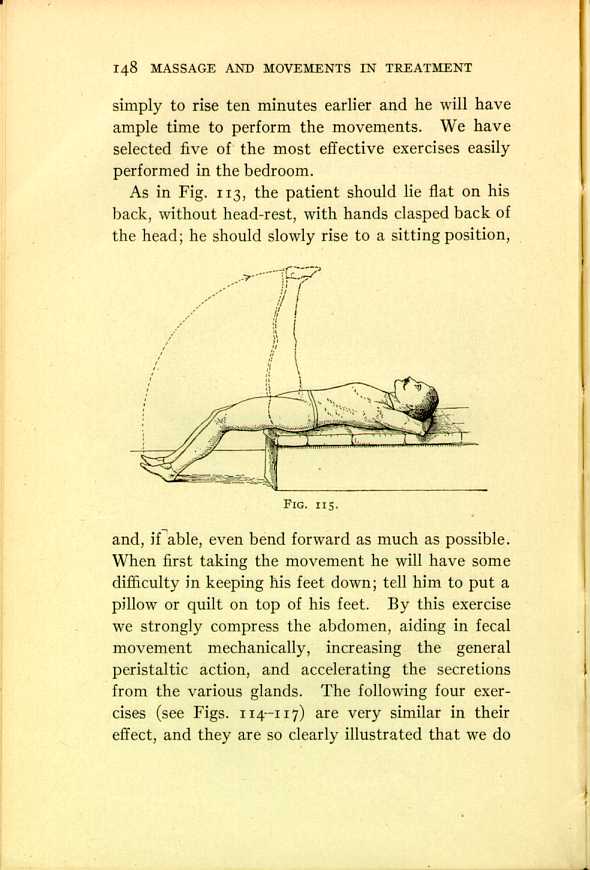
FIG. 115.
[Description:
Drawing of a man lying on a platform. Dotted lines indicate movement of the
legs.
]
Constipation is of most frequent occurrence in infancy. Less than three
evacuations a day indicate a constipated condition. Place the child flat
on its back in the bed, or, if convenient, on the
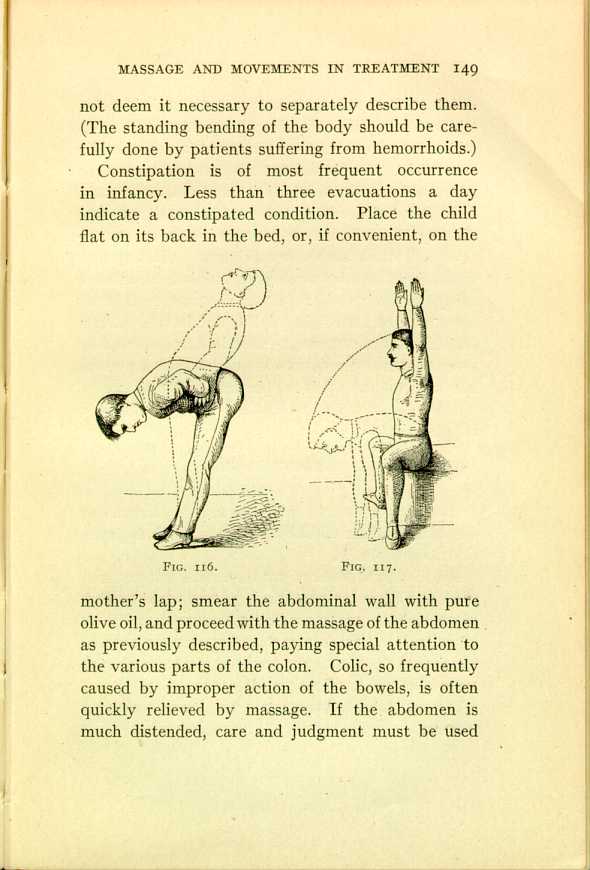
FIG. 116.
[Description:
Drawing of a man bent at the waist. Dotted lines indicate movement.
]
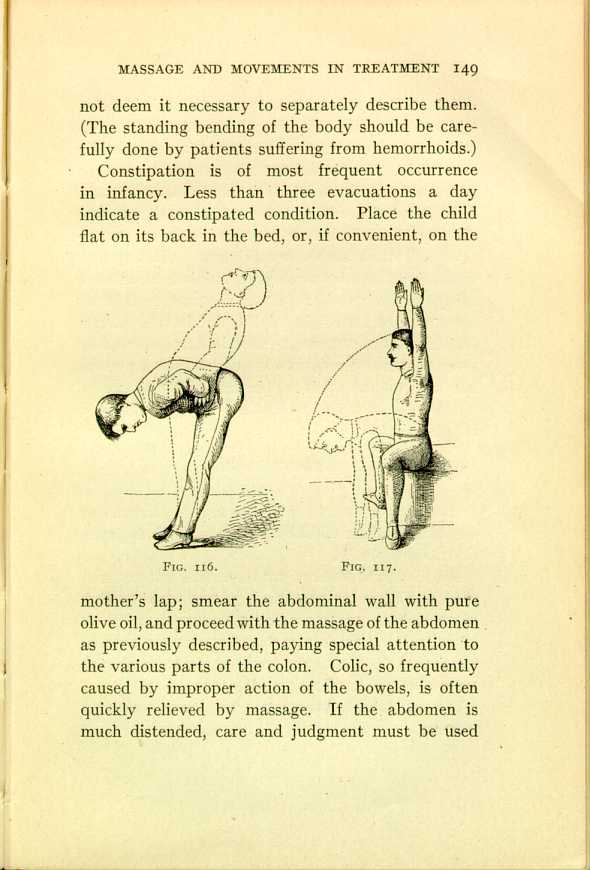
FIG. 117.
[Description:
Drawing of a seated man with his arms extended. Dotted lines indicate movement.
]
| Massage and the Original Swedish Movements | ||